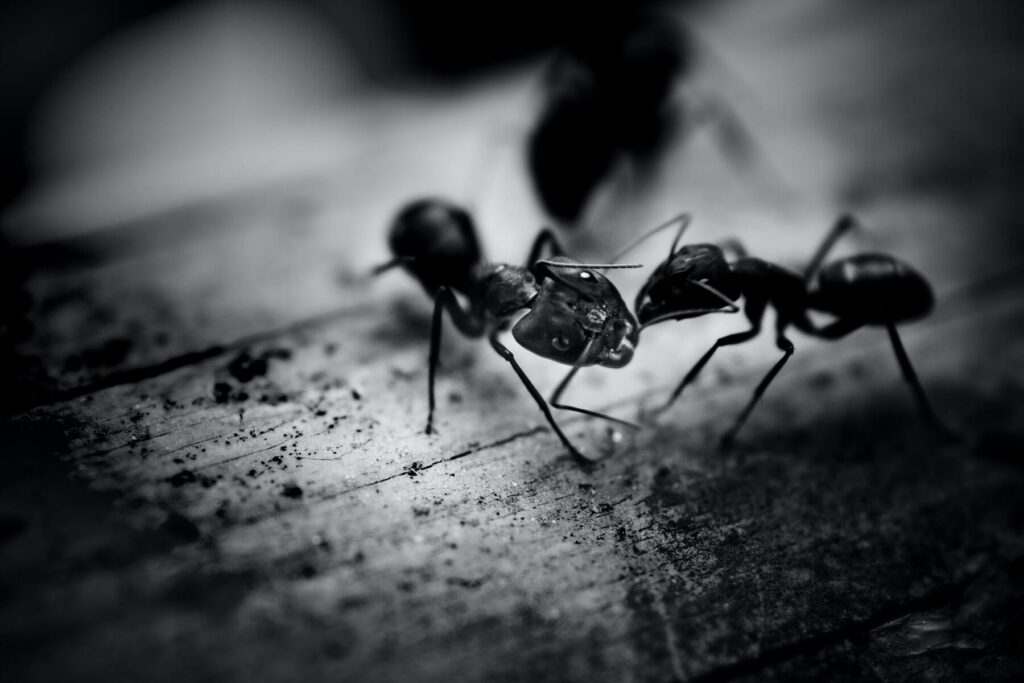As the days grow shorter and the once-vibrant greenery of summer transitions into the rich, golden hues of autumn, there’s an undeniable change in the air. This transformation isn’t limited to just the colors of the leaves or the coolness of the breeze; it extends to the very behavior of the myriad creatures that share our environment, especially those often dubbed as ‘fall pests’.
The rhythm of nature is such that every creature, big or small, adapts to the changing seasons in its own unique way. For many pests, the approach of winter triggers an age-old survival instinct. The dropping temperatures, dwindling food sources, and harsher conditions of the outdoors push them to seek warmth, shelter, and sustenance. And more often than not, our cozy homes present the ideal haven for these critters.
While we, as humans, might relish the autumnal charm, sipping on pumpkin-spiced lattes and planning festive gatherings, there’s an underlying challenge that homeowners face during this season. The very same nooks and crannies of our homes that store our cherished holiday decorations might also become the refuge for these fall pests.
As we prepare to embrace the beauty and festivities of the season, it’s crucial to also understand and anticipate the unwelcome guests that might be knocking at our doors, or more accurately, sneaking through the cracks. Let’s explore the world of these seasonal invaders, their behaviors, and the measures we can adopt to ensure our homes remain our exclusive sanctuaries.
The Rodent Rush
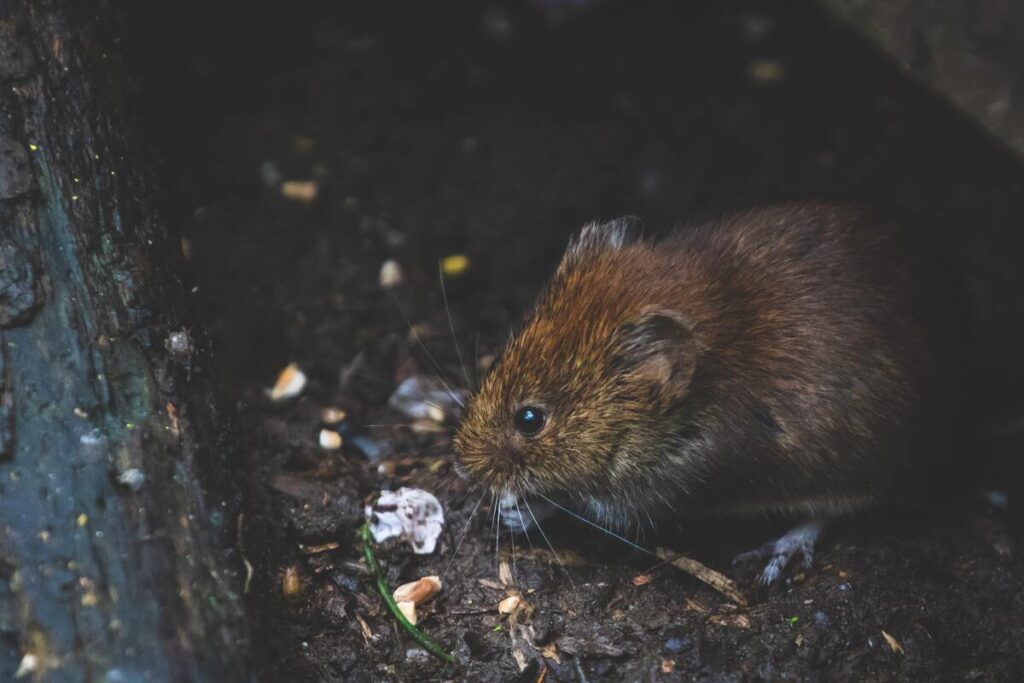
The ‘Rodent Rush’ is a term that aptly describes the surge of mice and rats seeking shelter from the impending cold. These fall pests, while small in stature, can bring about significant challenges for homeowners.
Mice and Rats: The Unseen Invaders
Mice and rats, two of the most common fall pests, are remarkably adept at adapting to various environments. Their flexible bodies, driven by survival instincts, can squeeze through the tiniest of gaps, making our homes an accessible refuge from the chilly outdoors. While they might seem harmless at first glance, their presence can lead to a multitude of problems. From gnawing on wires and furniture, to transmitting severe diseases, to contaminating food sources, these rodents are more than just a nuisance.
Signs of Rodent Infestations and Potential Dangers
Detecting a rodent infestation early is crucial. Some telltale signs include droppings in secluded areas, gnaw marks on furniture or food containers, and scratching noises, especially during the night. Additionally, a distinct musky odor might indicate a significant rodent presence.
But beyond the obvious signs, the dangers they pose are even more concerning. Mice and rats are known carriers of various diseases, such as hantavirus, salmonellosis, and even bubonic plague. Their urine and feces can contaminate food sources, and their constant gnawing can damage structures and even cause electrical fires.
Health Dangers
Hantavirus Pulmonary Syndrome (HPS)
Hantavirus is a potentially life-threatening disease transmitted primarily by deer mice, which are common throughout North America. People can become infected by inhaling airborne particles of urine, feces, or saliva from infected rodents. HPS symptoms can include fever, muscle aches, and respiratory distress, and it can lead to severe respiratory failure. Proper rodent control and cleanup of contaminated areas are essential to prevent HPS.
Lyme Disease
While ticks are the primary vector for Lyme disease, rodents like white-footed mice play a role in maintaining the disease’s cycle. These mice can carry the bacteria responsible for Lyme disease, Borrelia burgdorferi. When ticks feed on infected rodents and then bite humans, they can transmit the bacteria. Lyme disease can lead to various symptoms, including fever, fatigue, joint pain, and neurological issues if left untreated.
Salmonellosis
Rodents, particularly rats and mice, can carry Salmonella bacteria. People can contract salmonellosis by consuming food or water contaminated with rodent feces or by direct contact with rodents. Symptoms include diarrhea, fever, abdominal cramps, and vomiting. Proper food storage and sanitation are crucial to prevent this illness.
Rat-Bite Fever (RBF)
RBF is a bacterial infection caused by two different bacteria: Streptobacillus moniliformis and Spirillum minus. Rats, especially pet rats, are the primary carriers of these bacteria. People can become infected through bites, scratches, or contact with rodent urine, feces, or saliva. RBF can cause fever, muscle pain, joint pain, and a distinctive rash. It can be severe if not treated promptly with antibiotics.
Hacks to Combat Rodent Infestations
Identification and Inspection: Use a flashlight to inspect dark corners, basements, and attics. Look for droppings, gnaw marks, and nesting materials as signs of rodent activity.
Seal Entry Points: Rodents can squeeze through surprisingly small gaps. Use steel wool to fill these gaps before sealing with caulk. The rough texture of steel wool deters rodents from chewing through.
Clean and Declutter: Rodents are attracted to food sources. Ensure all food, including pet food, is stored in airtight containers. Use peppermint oil on cotton balls and place them in areas of activity. Mice dislike the strong scent, making it a natural deterrent.
Set Traps: Place traps near walls, as rodents typically run along the edges of rooms. Use peanut butter as bait. Its strong aroma attracts rodents more effectively than cheese.
Consider Natural Predators: If you have a cat or are considering getting one, they can be a natural deterrent for mice.
Seek Professional Help: For severe infestations, it might be more time-efficient to hire a professional exterminator. They can provide specialized solutions and advice tailored to your home’s specific needs.
Prevention is Key: Plant mint and lavender around the perimeter of your home. The strong scent can deter rodents from approaching. Regularly inspect your home, especially as fall approaches, to ensure that any new potential entry points are promptly sealed.
By taking a systematic approach and incorporating these tips and hacks, homeowners can effectively combat the challenge posed by fall pests like rodents, ensuring a cozy and pest-free environment as the colder months set in.
The Bug Brigade
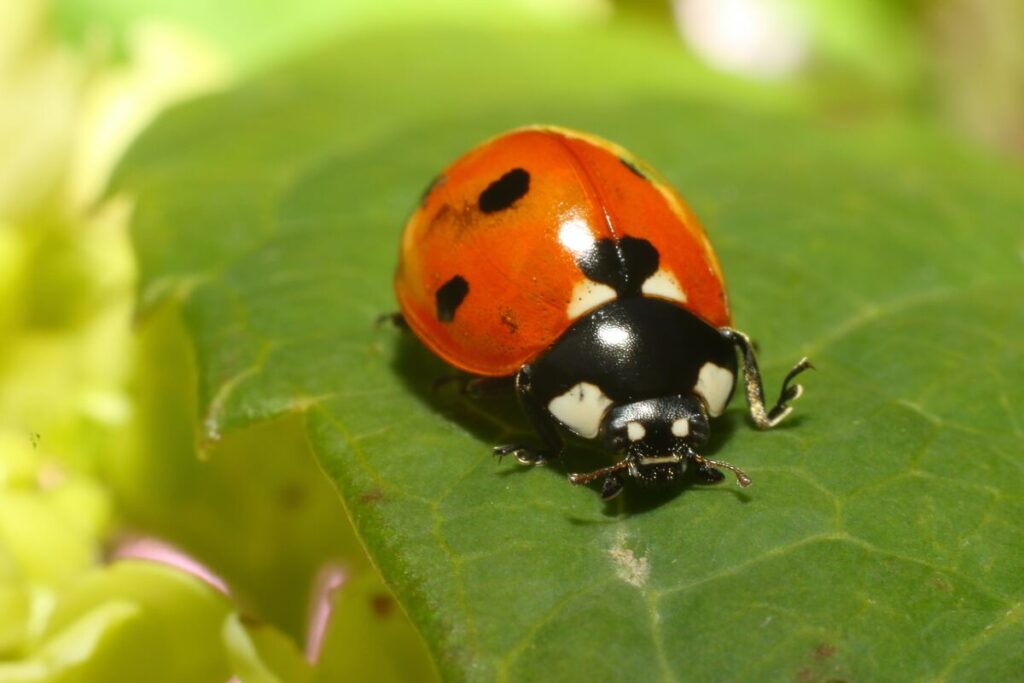
A variety of bugs, often collectively referred to as the ‘Bug Brigade’, also make their way indoors when the temperature drops. Let’s delve into understanding these common fall pests, their behaviors, and how to manage them effectively.
Stink Bugs: Unwanted Aromatic Invaders
Origin and Behavior: Originally from Asia, the Brown Marmorated Stink Bug has become a common sight in many parts of the U.S. They get their name from the pungent odor they release when threatened or crushed.
Hacks for Removal: A simple mixture of dish soap and water in a spray bottle can be used to spray them directly. The solution immobilizes and suffocates them. Ensure you dispose of them outside.
Health Dangers: While stink bugs are mostly harmless to humans and don’t bite, their odor can be quite unpleasant.
Ladybugs vs. Asian Lady Beetles: Spotting the Difference
Differences: While both are beneficial for gardens due to their appetite for aphids, Asian Lady Beetles are slightly larger, more aggressive, and can sometimes bite. They also have a distinctive ‘M’ or ‘W’ shaped mark on their heads.
Hacks for Removal: Vacuuming is an effective way to remove them from your home. Ensure you empty the vacuum outside.
Health Dangers: Asian Lady Beetles can bite, causing slight discomfort, but are not harmful or poisonous.
Boxelder Bugs: The Red-Edged Invaders
Identifying Features and Habits: Recognizable by their black bodies with red edges, these bugs are attracted to warm areas and are often found sunbathing on the exterior of homes.
Hacks for Removal: A mixture of equal parts water and white vinegar can be sprayed directly on them or the areas they frequent.
Health Dangers: They pose no direct threat to humans but can become a significant nuisance when they invade homes in large numbers.
Spiders: The Eight-Legged Tenants
Common House Spiders and Their Behavior: The most common house spiders include the American House Spider, Jumping Spider, and Cellar Spider. They’re generally harmless and help control other pests.
Hacks for Removal: Essential oils like peppermint or lemon can act as natural repellents. Spray diluted oil around windows, doors, and other entry points.
Health Dangers: Most common house spiders are harmless. However, be cautious of species like the Brown Recluse or Black Widow, which can pose health risks if they bite.
Cluster Flies: The Slow-Flying Buzzers
Lifecycle and Invasion Reasons: Cluster flies develop in the ground during the warmer months and seek shelter in homes during the colder months to hibernate.
Hacks for Removal: UV light traps can be effective in attracting and trapping these flies.
Health Dangers: Cluster flies do not transmit diseases and are generally harmless, but their presence in large numbers can be bothersome.
Fortifying Your Home Against The Fall Bug Brigade
As the adage goes, “Prevention is better than cure.” This holds especially true when dealing with the Bug Brigade. While each bug has its unique habits and preferences, there are general strategies homeowners can employ to make their homes less inviting to these fall pests:
Seal Entry Points: Regularly inspect your home for cracks, gaps, and holes, especially around windows, doors, and the foundation. Seal these using caulk or weather stripping to prevent bugs from sneaking in.
Maintain a Clean Environment: Regularly vacuum and clean your home, especially areas like the kitchen where crumbs and spills might attract pests. Ensure that food is stored in airtight containers.
Proper Lighting: Bugs are often attracted to lights. Consider using yellow or sodium vapor light bulbs for outdoor lighting, which are less attractive to insects.
Manage Moisture: Many bugs are attracted to damp environments. Ensure that your home is well-ventilated, fix any leaks promptly, and use dehumidifiers in particularly humid areas.
Landscaping: Regularly trim shrubs, trees, and plants near your home’s foundation to reduce hiding spots. Also, ensure that mulch or garden debris is kept at a distance from your home’s walls.
Natural Repellents: Planting herbs like lavender, mint, or rosemary around your home can act as natural bug deterrents. Additionally, essential oils like eucalyptus, peppermint, or lemon can be sprayed around entry points.
Regular Inspections: Periodically check less frequented areas of your home, like basements, attics, or crawl spaces, for signs of bug activity. Early detection can prevent larger infestations.
The Unseen Invaders
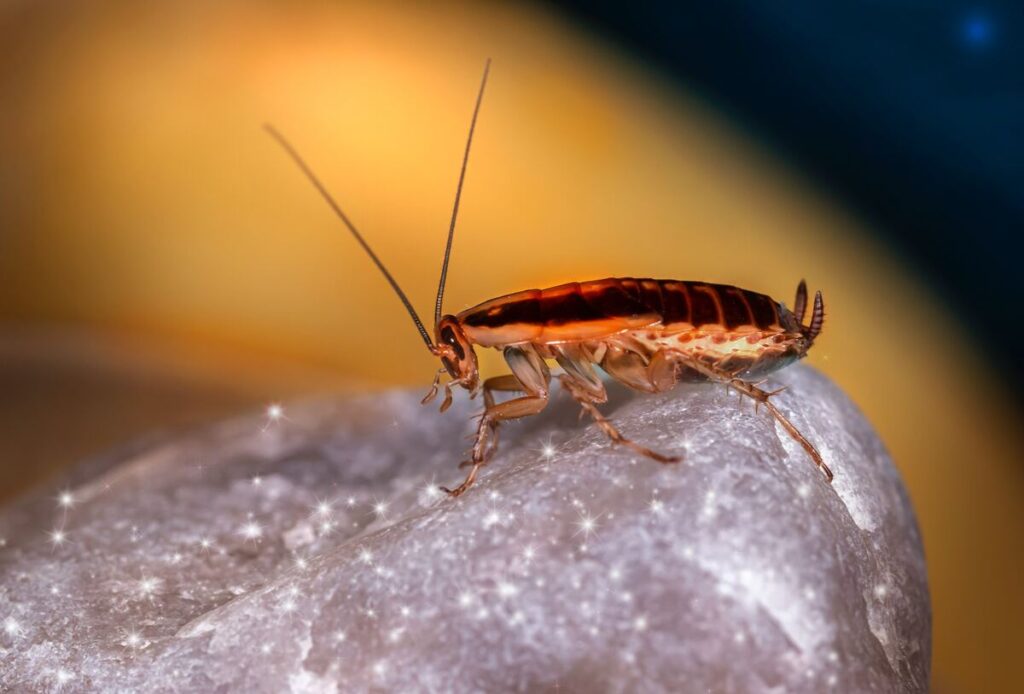
Beneath our floorboards, behind our walls, and in the dark corners of our pantries, a group of invaders makes their presence known. These are not the pests we often see in broad daylight, but the ones that lurk in the shadows, making their moves under the cover of darkness. Let’s shine a light on these unseen invaders, understanding their habits and learning how to keep them at bay.
Cockroaches: The Resilient Survivors
Different Species and Their Habits: The most common species found in U.S. homes include the German, American, and Oriental cockroaches. While their habits might vary slightly, they all seek warmth, moisture, and food. They’re nocturnal and are often found in kitchens, bathrooms, and basements.
Prevention: Regular cleaning, especially in food preparation areas, is essential. Seal cracks and crevices, fix leaky pipes, and ensure that food is stored in airtight containers.
Health Risks Associated With Cockroaches
Cockroaches can spread diseases. They are known to carry bacteria on their bodies and in their feces, saliva, and urine that can contaminate food, cooking equipment, and living spaces. Here are some key points regarding cockroaches and diseases.
Bacterial Contamination: Cockroaches can carry and spread various bacteria, including Salmonella, E. coli, and Staphylococcus. These bacteria can cause food poisoning and other gastrointestinal issues in humans when they come into contact with food or surfaces used for food preparation.
Allergens: Cockroaches produce allergens that can trigger allergic reactions and asthma in some people, especially in urban areas. These allergens can be found in cockroach feces, saliva, and shed body parts.
Parasitic Worms: Cockroaches can pick up and spread parasitic worms, such as pinworms and hookworms. If a cockroach carrying parasitic eggs comes into contact with human food or utensils, it can lead to the ingestion of these eggs by humans.
Once ingested, pinworm eggs hatch in the human intestine. The female worms then move to the anal area to lay eggs, causing itching. This can lead to a cycle of reinfection if the eggs are transferred back to the mouth via contaminated hands.
While less commonly transmitted by cockroaches, if hookworm larvae are ingested or penetrate the skin, they can travel to the intestines and feed on blood, leading to anemia and other complications.
Fungi: They can also carry fungi that can be harmful to humans. Some of the most common include Aspergillus, Candida, Penicillium, and Rhizopus. These fungi thrive in the same environments that cockroaches prefer, such as damp basements, bathrooms, and kitchens. The fungi can be transmitted to humans in various ways, such as directly contaminating food and cooking utensils with fungal spores. Additionally, as cockroaches move through a home, they can leave behind feces and shed skin, which can also contain fungal spores. When these are inhaled or ingested, they can lead to infections.
Viruses: While they are not primary vectors of viruses, there is some evidence to suggest that cockroaches can carry certain viral diseases, such as the poliovirus, Entric Viruses, and the RSV virus.
Secondary Infections: The presence of cockroaches can lead to secondary infections. For instance, their feces and shed skin can contaminate open wounds, leading to infections.
Ants: The Organized Foragers
Common Species in Fall: As temperatures drop, species like the Odorous House Ant, Pavement Ant, and Carpenter Ant often invade homes in search of food and shelter.
Prevention: Keep surfaces clean and free from food crumbs. Seal potential entry points and consider using natural repellents like lemon juice or cinnamon at entry paths.
Earwigs: The Misunderstood Night Crawlers
Behavior: Contrary to popular belief, earwigs don’t crawl into people’s ears. They are nocturnal creatures that hide in damp areas during the day and come out at night to feed on decaying plant material and other insects.
Common Misconceptions: The pincers on their tail end can look menacing, but they’re not harmful to humans. They use them for defense against other insects.
Prevention: Reduce moisture around your home by fixing leaks and ensuring proper drainage. Clear out garden debris and leaf piles near your home’s foundation.
Pantry Pests: The Silent Food Thieves
How They Get Into Food Supplies: Pests like the Indian Meal Moth, Sawtoothed Grain Beetle, and Weevils can infest a variety of stored foods. They often enter homes through infested food products purchased from stores.
Prevention Tips: Regularly inspect your pantry and stored food items for signs of infestation. Store grains, cereals, and other susceptible foods in airtight containers. Regularly clean pantry shelves and consider using bay leaves as a natural repellent, as many pests dislike their scent.
Another Interesting Read: A Dive Into Cat And Dog Behaviours
Overwintering Pests
The transition from summer to fall signals a shift in the behavior of many pests. As the temperatures drop, a phenomenon known as “overwintering” begins. But what exactly does this term mean, and which pests are most likely to seek refuge in our homes during this time?
Leaf-Footed Pine Seed Bugs
History: Native to North America, these bugs are primarily found in the northern states and Canada. They feed on the seeds of various coniferous trees.
Health Risks: They don’t pose any health risks to humans but can be a nuisance when they invade homes.
Tips for Control: Seal any gaps or cracks in your home’s exterior. Using a vacuum cleaner can help in removing them from indoor spaces.
Western Conifer Seed Bugs:
History: Native to the western U.S., these bugs have expanded their range eastward. They feed on the seeds of various coniferous trees, especially pines.
Health Risks: They don’t pose any health risks but can be a nuisance due to the buzzing sound they make when flying.
Tips for Control: Ensure that windows, doors, and other openings are sealed to prevent their entry. Vacuuming is an effective method for removing these bugs from indoor spaces.
In understanding the concept of overwintering and the pests that commonly adopt this survival strategy, homeowners can be better prepared. With proactive measures and regular home maintenance, we can ensure that while winter brings its own set of challenges, unwanted pest guests won’t be one of them.
Final Words
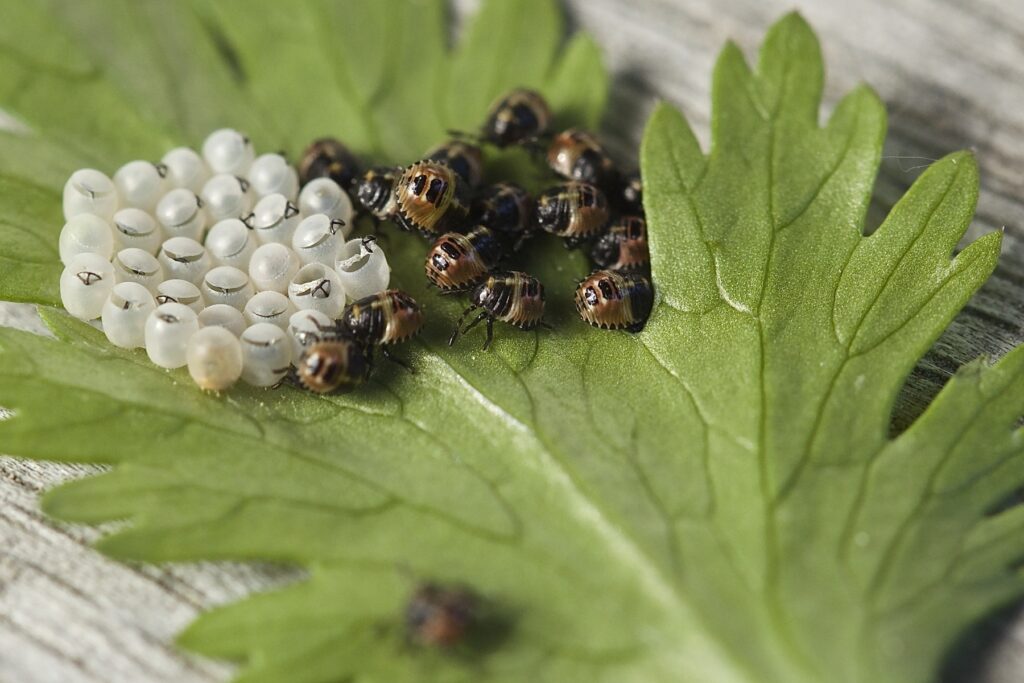
In the grand tapestry of nature, every creature has its role and rhythm. As the vibrant hues of fall unfold, it’s essential for homeowners to be aware of the ‘fall pests’ that might seek refuge within the cozy confines of our homes. While these invaders have their own unique histories and habits, understanding them is the first step in coexisting harmoniously. By staying informed and taking proactive measures, we can appreciate the beauty of the season without the added worry of unwelcome guests. Let’s embrace the autumnal transition with knowledge, preparedness, and a pest-free home.

